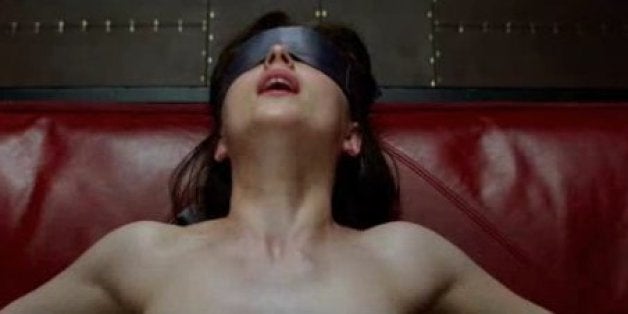
Middlebrow is a recap of the week in entertainment, celebrity and television news that provides a comprehensive look at the state of pop culture. From the rock bottom to highfalutin, Middlebrow is your accessible guidebook to the world of entertainment. Sign up to receive it in your inbox here.

In a Sunday interview with The Guardian, Jamie Dornan informed the world that there will be exactly zero penis shots in “50 Shades Of Grey.” Or to use the actor's parlance, Dornan's "todger" won't appear. The news struck fans with shock rivaled only by the realization that the pinot is running low: What good is a movie about sexy sex without any male nudity? That collective reaction encompasses the way E.L. James has made embracing expression of sexuality acceptable. By bringing Christian Grey into our consciousness, "50 Shades" made it okay to talk about BDSM the daylight.
There have been porn sites dedicated to BDSM since the dawn of the Internet. But it's not something we were ever especially comfortable with. The stigmatized perception of kink rang especially true for E.L. James' target audience (presumably repressed women in book clubs). BDSM was wholly taboo prior to this rise of Anastasia Steele's inner goddess. So, what happened?
Well, lets back up: Calling all “50 Shades”-reading book clubs “repressed” isn’t fair. But if we're being real, James' book is not for practicing sadists and masochists. The BDSM reflected in those pages is not BDSM in real life. As Roxanne Gay wrote for The Rumpus: “This analogy might help illustrate the difference between BDSM in the real world, and BDSM in the world of E.L. James—Fifty Shades of Grey : BDSM :: McDonalds : Food.” That about sums it up. Yet, on some level, this explosion of erotic content at a macro-culture level helped people who might not have otherwise had exposure to any food get a taste of Mickey D’s.
The power of “50 Shades” lies in that cheap and accessible packaging. It’s reductive, simplistic and partly wrong, but that’s what made it explode into a 100-million-copy phenomenon. It gives access to people who might have been otherwise either unaware or, perhaps worse, ashamed. As Dr. Audrey Ervin, professor of psychology at Delaware Valley College wrote on the subject, “What the book does say for sure is that there are women who want to explore sexual themes that aren’t mainstream and that books are giving those women who are curious an avenue to do that.” The key word there is “mainstream.” By breaking into the visible cultural stratosphere, “50 Shades” made it okay to sexually experiment and opened the lines of communication for doing so.
This isn’t so simple or silly as Suzy Homemaker using Swifer pads to lightly restrain her husband (that’s a joke and there’s a whole separate discussion to be had about whether we should be calling this stuff “mommy porn”). The thing to ponder here is the social constructs that surround our sexuality. The idea that these kind of activities are seen as abnormal or fetishistic until they are cast into the mainstream sheds light on how silly any of our social restrictions are in the first place. If the same people lining up for the midnight showing of “50 Shades” would have ever hesitated to participate in a discourse surrounding BDSM, maybe we need to worry a bit less about what other people think of our "todger"-related preferences.
Follow Lauren Duca on Twitter: @laurenduca
